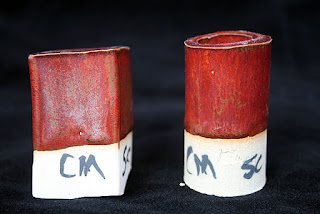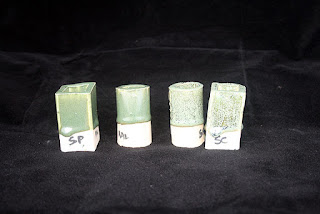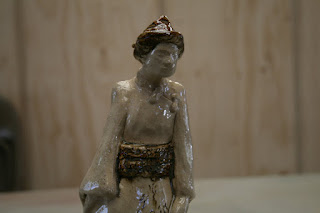The following classes are being offered at the Art League this fall. We are looking for participants to register in order to have the classes make. Both classes cover relevant topics for all studio members. You can register online or at the Art League office. Here are the class descriptions. Give Kim a call if you have questions.
FROM MUD TO MAIOLICA with Terry Whye
ADULTS Beginning to intermediate levels 9 a.m. to noon, 2 Saturdays
YOUTH Beginning to advanced levels 2 PM- 5 PM, 2 Saturdays
September 25 and October 2
If you enjoy decorative painting on your pottery and wish to expand your
technique and materials knowledge, then welcome to the world of maiolica
pottery! Tiles, simple bowls or platters will be slab constructed using a
rich dark brown maiolica clay. Classic opaque white glazes are combined with
the brushwork techniques of in-glaze painting characteristic of this
colorful ceramic art form. Includes a brief history of Maiolica ware, from
its roots in the Middle East, its spread to the Mediterranean and most of
Europe to its modern day translation by studio potters in North America.
Please note that these techniques are easily adapted to cone 6 firing
temperatures and a suitable high fire glaze recipe will be provided, making
this a useful class to anyone who attends open pottery studio days at the
League! Wear comfortable, old clothing.
technique and materials knowledge, then welcome to the world of maiolica
pottery! Tiles, simple bowls or platters will be slab constructed using a
rich dark brown maiolica clay. Classic opaque white glazes are combined with
the brushwork techniques of in-glaze painting characteristic of this
colorful ceramic art form. Includes a brief history of Maiolica ware, from
its roots in the Middle East, its spread to the Mediterranean and most of
Europe to its modern day translation by studio potters in North America.
Please note that these techniques are easily adapted to cone 6 firing
temperatures and a suitable high fire glaze recipe will be provided, making
this a useful class to anyone who attends open pottery studio days at the
League! Wear comfortable, old clothing.
A Simple Approach to Complex Pots:
Handles, Knobs & Decoration with Steve Witmer
Handles, Knobs & Decoration with Steve Witmer
October 25, 9 a.m.- 1 p.m.
This workshop is designed to explore additions to the basic pottery form. It’s through these additions to the basic vessel that the potter can transform an ordinary piece into an extraordinary one. The purpose of the workshop is to expand the thought process of the participants so that they are in control when they choose to push the limits of traditional pottery. Bring a sketch book, colored drawing medium (colored pencils, crayons, markers), one or two 6-9” cylinders (thrown or handbuilt) that are leather-hard, and any clay tools that you normally use in the studio.
$60 – Members $95 – Future members
To register online for either go to http://www.rehobothartleague.org/ or call 302-227-8408 to register with credit card.













































